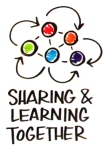Four of the top 7 competitive intelligence blogs were written in 2009. 2 were competitive intelligence analytic tools, which the other 2 were relationship skills: emotional intelligence; and marketing, R&D and product development relationships. These topics are timeless.
Here they are in order of popularity:
1. Templates for Win/Loss Analysis – The Win Loss request I get asked the most often is, “Can you share your Win Loss templates?” I break down Win Loss analysis questions into 4 buckets: relationship health, company reputation, product/service attributes, and servicing issues.
2. How a Good Relationship between Marketing and R&D Improves Product Development – When both marketing and R&D focus on understanding and acting on customer needs, it makes their jobs easier and their results more productive. This is a powerful competitive weapon since this is not the case at many companies. Perhaps R&D can be masters of the Art of Possibility while Marketing can master the Art of the Possible – that is what your customers want and are willing to pay for.
3. Sharpen Your Emotional Intelligence Skills – In competitive intelligence, strong emotional skills are essential since we’re often delivering bad news to management or threats to the business, which causes stress since they don’t want to hear it, even if it is the truth. Be sensitive as to how management will react to our news and analysis, and don’t spring surprises. What’s neat about EQ versus IQ, is that we can learn and be coached to improve our EQ skills.
4. How You Can Become a Conversation Rockstar – So much about life revolves around effective communication. As a primary researcher, I look for ways to motivate people to share. You need to understand what makes them comfortable to share with you. One source I read in 2016 is Traci Brown’s book, Persuasion Point: Body Language and Speech for Influence. While the book focuses on closing sales, the same tactics will work to promote sharing when conducting competitive intelligence collection or Win Loss interviews.
5. 7 Timeless Competitive Intelligence Tips – Here are a few: Company insularity is not a competitive advantage. Don’t forget that your employees are smart. What ever happened to good old fashioned customer service? Let employees create and have access to customer, sales and market intelligence.
6. Visualize Your Competitiors on a Radar Screen Competitor Map, a Great Competitive Intelligence Tool – The Radar screen is a totally visual tool which fits on one page for easy digestion. It can be used both strategically and tactically, and is a great way to visualize how competitors are positioned relative to your company and each other. The uses for the Radar Screen are endless. It can be divided into 4 quadrants which might depict competitors by 4 separate business units, 4 geographies, or 4 different reasons why customers buy. Read more about the Radar Screen in Adrian Slywotsky’s book, Value Migration: How to Think Several Moves Ahead of the Competition
7. BCG Matrix Study: A Visual Strategic Competitive Intelligence Tool: Explanation and Case Study – Use the BCG Matrix to visually depict a share of market snap shot among competitors.
See you in 2017.
Win/Loss Analysis book gives you a process to learn why you’re losing business and how to keep more of it!
Receive our 6-page Win/Loss Cheat Sheets
Connect on LinkedIn Connect on Twitter
Filed under: Competitive Intelligence, Cooperative Intelligence, Denver, Ellen Naylor, emotional intelligence, win loss analysis | Tagged: competition, conversation, customer intelligence, intelligence, interviews, loss analysis | Comments Off on 7 Top Competitive Intelligence Blogs Read in 2016


